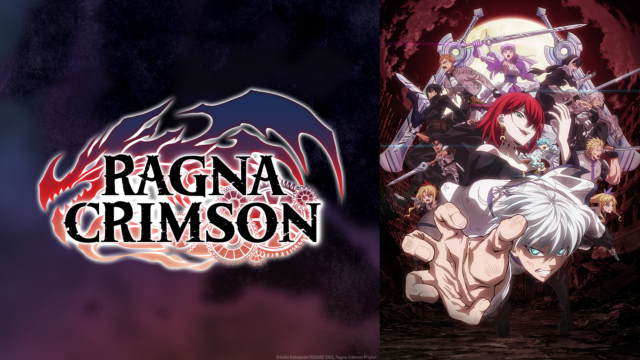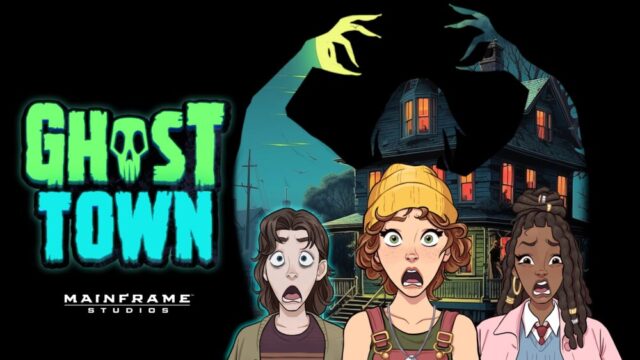Review: JJ Villard’s Fairy Tales “Pinocchio”
Overview(Spoilers Below):
Pinocchio is another one of the classic fairy tales from out of Grimm’s library that’s especially popular due to the work that The All And Powerful Disney has done with the story. JJ Villard’s Fairy Tales takes an appropriately skewed slant on the story about truth and humanity, but while it removes many of the more common tropes of the Pinocchio narrative it retains the nature of what it means to be human and the educational allegory component that makes the original story work as well as it does. Here, Gelato has the opportunity for his man-made boy, Pinocchio, to become real, but only if he can prescribe to a certain moral standard. This is a difficult task in the real world, but “Pinocchio” illustrates that in the Land of Villardia it may be borderline impossible.
Our Take:
There have been some radical ideas presented in JJ Villard’s Fairy Tales. In fact, it’s a series that seems to pride itself on just how much it can twist and pervert these beloved bedtime staples. This drive has resulted in some very entertaining fairy tale adaptations, but the latest episode may be its most brilliant concept yet as it mashes together the Pinocchio narrative with A Clockwork Orange. Villard has a clear fascination with Kubrick (honestly, who doesn’t?), but it’s quite inspired to tell a bizarre version of A Clockwork Orange with Pinocchio positioned in the impressionable Alex role. Previous episodes of the series have used segments of the score from The Shining for thematic effect, but this entry immediately kicks off with pieces of A Clockwork Orange to help invite the comparison between these two similar, yet different, morality tales.
A curious choice in this episode is that Gelato is arguably more the story’s main character than Pinocchio, which is a fresh perspective that works here. Pinocchio is created out of Gelato’s severe loneliness and how he just wants a family and a sense of companionship more than anything else. Additionally, “Pinocchio” stands out due to the disturbing nature of Pinocchio’s design. He looks like something that was cobbled together by Sid from Toy Story. This take on the narrative never establishes Gelato to be a master puppet maker or inventor, so his rudimentary design for Pinocchio feels appropriate. It’s a twisted look that continually dispenses surprises as if the contents of that barrel are an infinite abyss of horrors.
“Pinocchio” already has enough on the line, but the story creates more stakes and if Gelato can’t civilize Pinocchio in three days then they’ll both be sent to hell. It’s interesting to note that in this scenario Pinocchio will also be subjected to these tortures of damnation, which doesn’t exactly seem fair, but it’s appreciated that the episode doesn’t hold back here. It’s a real salt of the Earth situation where if this mission is a disaster then everyone will be taken out along with it.
Gelato’s attempts to educate Pinocchio go poorly, but the episode isn’t very interested in the character’s reformation methods. It would be a tall task to educate any kind of living puppet in the span of three days, but “Pinocchio” seems to suggest that Gelato’s child also has some spawn of Satan within him. Pinocchio gleefully announces, “I am Satan!” while he attacks his father. The episode is quite clever with how it takes the idea that Pinocchio has no moral compass and pushes it to the extreme where he’s some kind of devil child. Pinocchio runs amok with the life that he’s been given and he gets away from his guardian and goes on a murderous rampage.
Gelato is left to pick up the pieces as the deadline to his Fairy Godmother arrangement grows closer. It’s the ultimate example of how far a parent is willing to go for their child. It’s honestly kind of sad to see Gelato take such exhaustive lengths to protect Pinocchio just because he’s so lonely and wants to have a family, yet his life was considerably better before Pinocchio comes around. He’s so addicted to this picturesque fairy tale ending that it costs him his life. It’d be super refreshing if half way through some classic Grimm’s story the protagonist just abandoned their fantastical goal because the reward was no longer worth it. “Pinocchio” entertains how often the triumphs of the characters in fairy tales really aren’t victories at all.
“Pinocchio” makes it look like Gelato’s biggest concerns will be his pact with the Fairy Godmother, but after he cleans up Pinocchio’s mess he has the local authorities come after him for the crimes of his “offspring.” This complication builds on the episode’s themes of blind protection, but it also provides some nice continuity of sorts. Peter Weller’s Sergeant Hardcop returns, although it seems like he may be reserved to his own form of purgatory where he continues to meet a grisly end. Hardcop’s death emphasizes the typically ultra-violent nature of JJ Villard’s Fairy Tales, especially when it comes to its conclusions.
For a brief moment it looks like “Pinocchio” may be heading towards a happy ending, but of course, this is JJ Villard’s Fairy Tales, so any kind of positivity has to be simultaneously drenched in dread. Despite the tragedy that Gelato faces, Pinocchio does technically become a “good boy” by the end of it all, even if he’s still surely off to commit more selfish murders the moment the episode is over.
“Pinocchio” is interested with the moral aspects of the Grimm’s fairy tale more than anything else. Surprisingly, the most famous element of the Pinocchio story—the fact that his nose grows when he tells a lie—is reserved for the final minute of the episode. Even then it’s used more as a gory gag that the audience is in on because of their pre-existing Pinocchio knowledge than it being something that’s important to the narrative. It works in the episode’s favor that this installment gets liberal with what aspects from the source material it wants to explore.
There are some thoughtful ideas that are explored in this episode, but “Pinocchio” still offers a lot on the visual side of things, too. Pinocchio’s destruction of Gelato’s house really accentuates the chaos and allows a lot to go on at once. The character is a beacon for mayhem, which typically leads to some especially bloody displays that make geysers of viscera seem as natural as breathing. There are also plenty of smaller details that go a long ways, like how Gelato and Pinocchio live in a whale-shaped home, which is a nice way to pay respect to elements of the original fairy tale.
“Pinocchio” also makes the best use of the series’ subliminal messages, since it’s actually relevant to Gelato’s desire to instill knowledge in Pinocchio, which is in a sense its own form on brainwashing. “He No Lying” is repeatedly flashed on the screen after some of Pinocchio’s more jarring gestures and it’s treated like the character’s moral barometer. One could even argue that the subliminal messages that JJ Villard’s Fairy Tales frequently subjects its audience to are not dissimilar to the brainwashing tactics of the Ludovico Technique from A Clockwork Orange. Sometimes JJ Villard’s ideas can feel a little haphazard, but “Pinocchio” brings all of his tricks together in a justified way.
JJ Villard’s Fairy Tales once more sticks to the horror genre for its voice talent and “Pinocchio” turns to the Cryptkeeper’s John Kassir for some delightful work. Kassir does what is surely his interpretation of Spongebob Squarepants for the Pinocchio role and it’s uncanny how similar it sounds to Tom Kenny. The voice may create a feeling of comfort, but this character is the opposite of Spongebob and is incredibly annoying and difficult to tame. Impressively, Kassir does double duty here as he voices both Pinocchio and Gelato, which means that this whole episode is him talking to himself for the most part. This could turn out to be rather awkward, but Kassir is enough of a professional that it’s not even noticeable.
“Pinocchio” is another very entertaining addition of JJ Villard’s Fairy Tales. It’s a strong example of an installment that’s able to play into the expectations that come along with the source material, but also push it into completely new territory that’s able to raise insightful ideas. It’s also very successful with how it can take the DNA of a famously dark piece of cinema and mix it together with a playful fairy tale in a way that makes a lot of sense. It’s hard to not have fun with this morbid take on parenting and morality.
And somehow, all of this is still not anywhere as disturbing as The Adventures of Pinocchio.


























Hi Ashley, thank you so much for reading and we love the feedback. Note that on that day we had 14th posts go up and only ten posts show on the front page, so it's possible the preview had already been archived by the time you got to it. One recommendation would be to add our RSS feed to your favorite news aggregator service like Feedly, this way you get all of the latest posts!